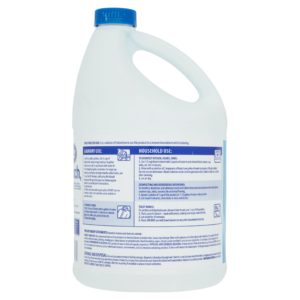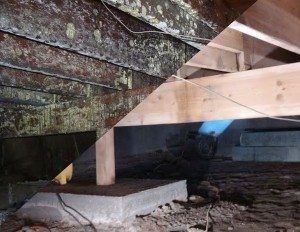One of the most common things we hear when a mold job is called in is, “It’s so weird that it came back. I put bleach on it last time. I must have missed a spot.” It would seem that bleach would be a natural thing to reach for when dealing with mold, but counterintuitively, treating mold with bleach often makes the problem worse, not better.
Why, you ask? Well the short answer is this. Bleach does kill mold and its spores, and therefore would be an excellent way to treat mold problems in the home, and it actually can be if for some reason you had mold on a countertop. The problem is that when you grab the bleach off the store shelf, what you don’t realize is the active agent is often less than 10% of the total liquid in the bottle, and the vast majority is just water.
You see, bleach is designed to be used on smooth surfaces, like a granite counter top, or a linoleum floor. The active agent and the water all interact with whatever you’re trying to clean. The problem is that mold often shows up on surfaces that are porous, like drywall or wood. This means that the surface isn’t 100% smooth, and instead has many tiny holes in it. The active agent in bleach kills the mold that is on the surface and bleaches out the color, making you think you handled the problem. The active agent can’t get into the tiny pores but the water can. This means while the bleach is killing the mold on the surface, the water is actually feeding the mold under the surface causing it to come back with a vengeance.
When attempting to tackle mold, always contact a professional. There are so many different species that can cause so many different help problems that you owe it to yourself to get it done correctly the first time.

